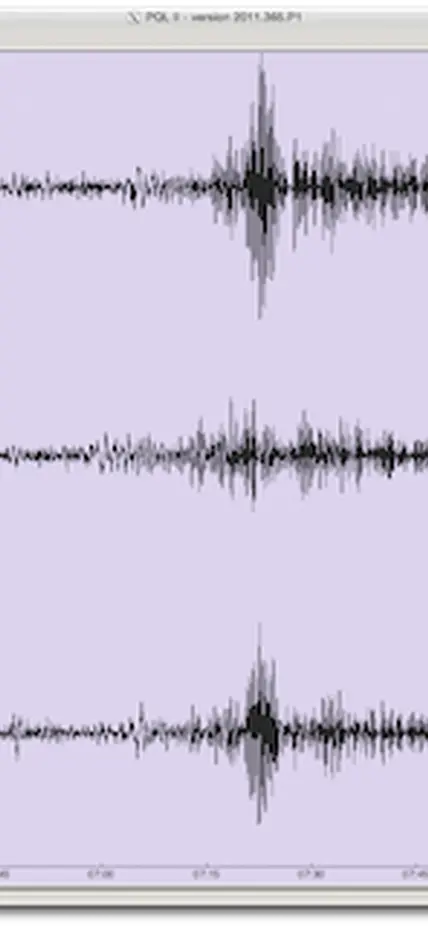The devastating Saturday, 25 April 2015, earthquake that shook Nepal was registered on seismometers around the globe, including one located at DTM’s Broad Branch Road Campus in Northwest Washington D.C.
This seismometer was not part of a permanent monitoring station, but just happened to be recording on a test pad in a basement laboratory over the weekend. It rather spectacularly passed its functional test.
The screenshot shown below was taken during the very first look at the data. The three seismograms in the graph show three components (vertical, North-South, and East-West) of ground velocity, all measured simultaneously by the same instrument.

The shown subset of the seismograms covers three hours of data, from 6:00 until 9:00 UTC (2AM until 6AM local). According to the USGS, the magnitude 7.8 earthquake started at 6:11:25 UTC, with its epicenter located about 80 km (50 miles) northwest of Nepal’s capital Kathmandu. As can be seen on the graph, it took about 15 minutes for the first seismic waves to reach Washington DC. These P waves start as tiny wiggles, followed by a succession of larger onsets, called phases, of different waves that travelled at lower velocities or took longer than the most direct pathways. Eventually the signal culminates in the impressive surface waves that form the largest amplitudes in the seismogram. Thereafter, the signal decays only gradually, as still more “echoes” of the Earthquake arrive hours after it started.
The Earthquake occurred along or near the main frontal thrust fault between the Eurasian and Indian plates, where India pushes into and under Eurasia, thereby creating the uplift of the Himalayan mountains. Earthquakes are not uncommon in this region, but this one was, unfortunately, unusually large.
More information on the Earthquake and its geological setting can be found on the USGS website.
